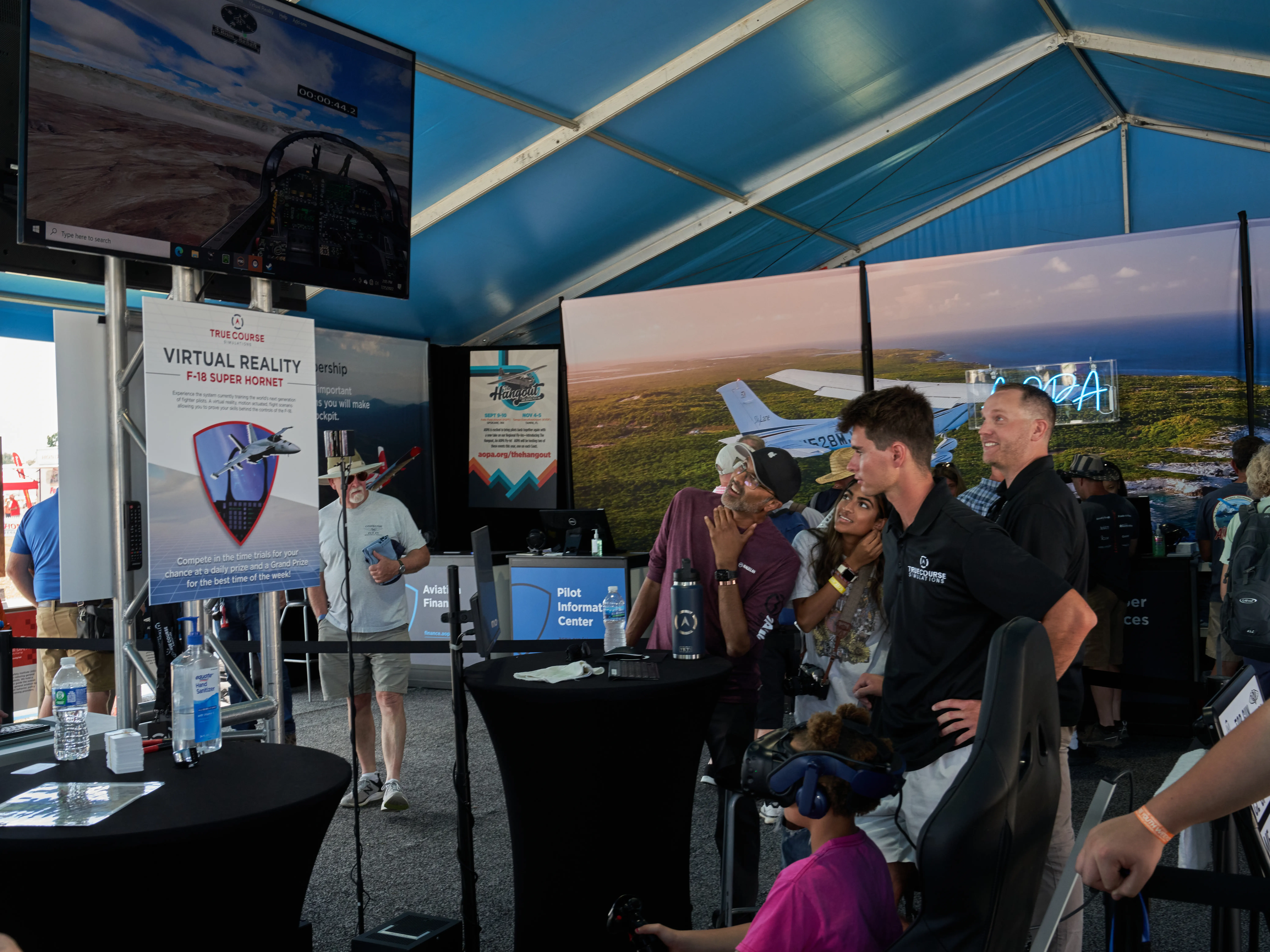
In Virtual fly we are proud to announce that we have been selected together with True Course Simulations by Embry Riddle Aeronautical University as one of their trusted partners to offer top notch flight simulation training to their STEM students.
The university has equipped a specific room with eight flight training setups deisgned by True Course Simulations and that include our prestigious flight controls shown in Figure 1: the yoke “YOKO+”, the rudder pedals “RUDDO+” and the TPM “V3RNIO+”. We have also provided custom flap controls and switch avionics panels to further enhance the realism and thus the efficiency of the training devices. We are very excited that our hard work and dedication towards design and R&D of our products is recognised by an important institution such as Embry Riddle and that will be a crucial part of the teaching process of their students.
Embry Riddle is the largest and most respected university specialising in the aviation/aerospace sector and one of the leading Universities in their Aerospace, Aeronautical and Astronautical programmes thanks to their demanding courses and amazing hands-on practical work. Back in 1925, this institution surged as a flight training school and has grown tremendously over time up to the point that, this last academic year (2020-2021) they enrolled an impressive 34,000 students in their more than 100 degrees at the associate, bachelor’s, master’s, and Ph.D. level.
Figure 1- Part of Embry Riddle’s in-campus airport.
The prestige of some of the practical work Embry Riddle offers can be reflected to their impressive aviation/simulator fleet: as of 2020, Embry Riddle possessed 119 aircraft and 134 simulators. However, this number is apparently not enough, since the university has still expanded this number with eight training devices containing Virtual Fly’s products, shown in Figure 2. This is a clear example of the importance that flight simulation currently has in the flight training industry, and the high demand there is in this growing sector. According to reports by Boeing, 804,000 new pilots will be needed by the flight industry by 2038, and the training of some of these will be carried out partially inside one of Virtual Fly’s certified simulators.
Figure 2- Training devices room in Embry Riddle Aeronautical University.
True Course Simulations has been the main provider in this case, and this ambitious company has optimised the flight training process for their student clients, delivering a simple yet highly efficient simulation flight training programme. This consists of 30 hours of training material based on the FAA regulated Private Pilot Certification, so its seriousness and effectivity are unquestionable. Throughout 20 years of experience, their program consists of three simple steps which are imperative for flight training: read, watch, and do. These basic steps come down to doing pre-flight briefings, followed by visual training of their objective through videos where they see what is required for the exercise and finally hands-on practice on high resolution interactive simulators. This leverages the knowledge students gain in ground schools and better prepares them for their daily pilot procedures and potential hazards and manoeuvres they are going to need to become excellent and safe pilots.
Figure 3- The set up!
The training programme proposed by True Course Simulations accelerates the training process drastically since it allows a high degree of repetition, which all pilots are going to agree that it is crucial. Moreover, failure is an option and instructors can immediately try to execute core concepts without risk. The FAA requires a minimum of 40 hours to obtain the pilot license, and, according to data collected from flight schools worldwide, the average student pays for 75 flight hours. This 35-hour difference translates to an average extra cost of almost 6000$, according to US estimates of flight training per hour cost of 165$. With a carefully planned flight training process such as True Course Simulations’, this extra cost could very much be avoided since trainees would be confident in their skills even before hopping into the actual aircraft.
The constant evolution of tech surprises us every day and opens the possibility to expand the applications for certain product to their maximum potential. A clear example of such is Virtual Reality, a young but quickly growing technology which can be used for applications ranging from the gaming sector to even training a constructor company’s workforce. VR has been quickly implemented into flight simulation programmes because it offers a degree of realism and immersion that is unmatched to any simulation setup, being as simple as flight controls together with a Virtual Reality headset. True Course Simulations incorporate VR into their training stations, as can be seen in Figure 3, and the possibilities behind this technology are staggering and very practical, given the small and compact room and relatively low investment these VR training devices require in comparison to full motion simulators.
Figure 4- Visual from Virtual Reality headset in TCS interactive programme!
The simulation and flight training industry are undergoing a tremendous expansion and Virtual Reality will be a crucial part of it. Virtual Fly will be at the core of this by pushing our R&D to the very limit to offer our customers the best products possible to fit their demands, and we will continue to help universities and schools like Embry Riddle to train the next fleet of pilots that enable us to soar into the sky!
